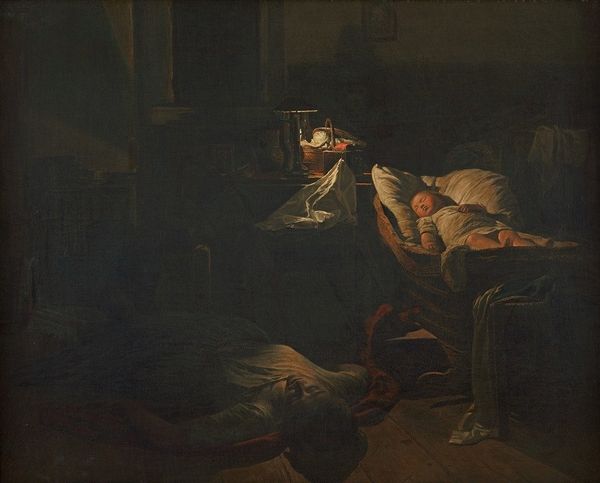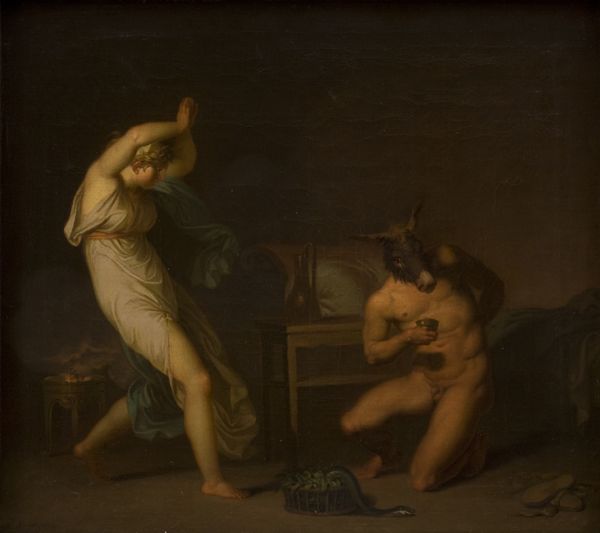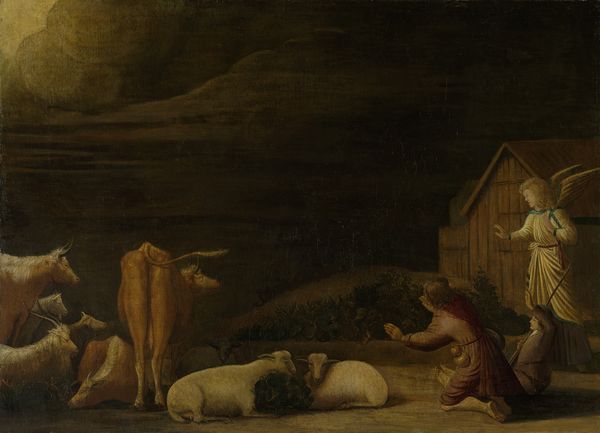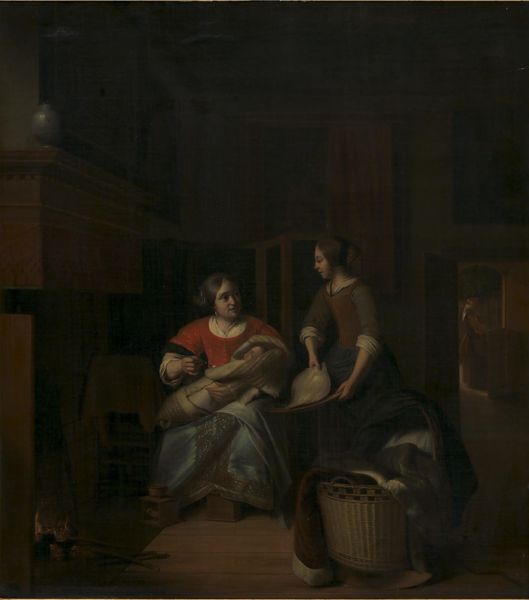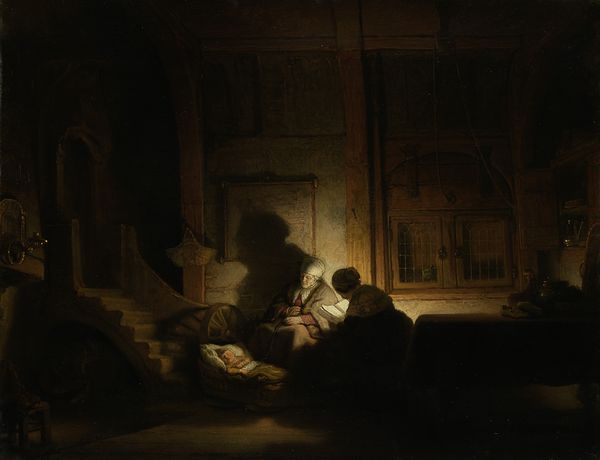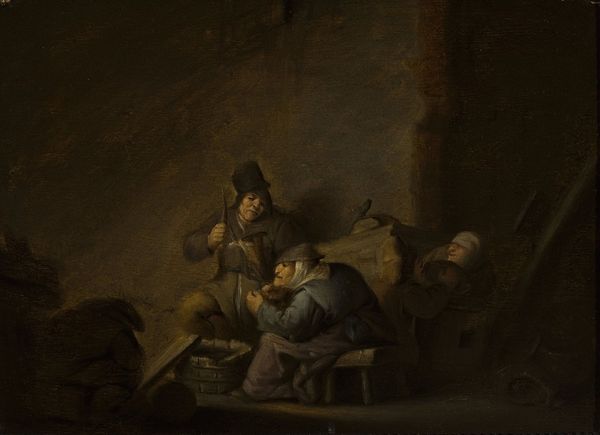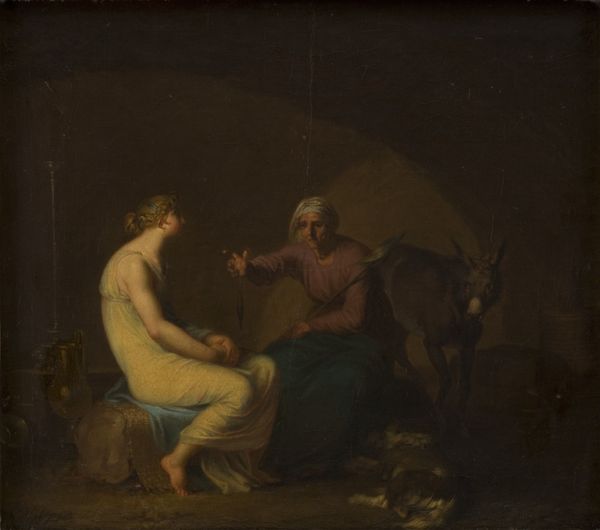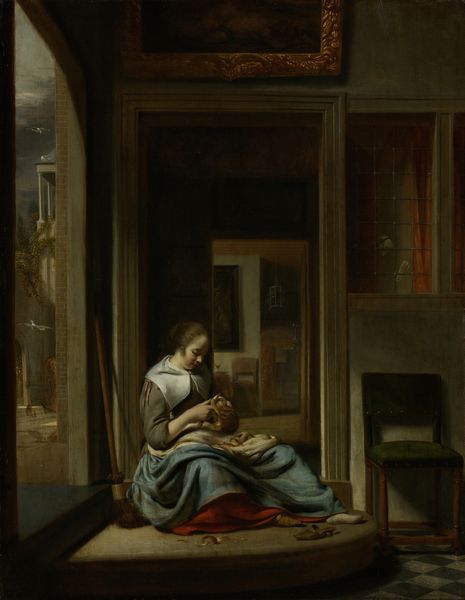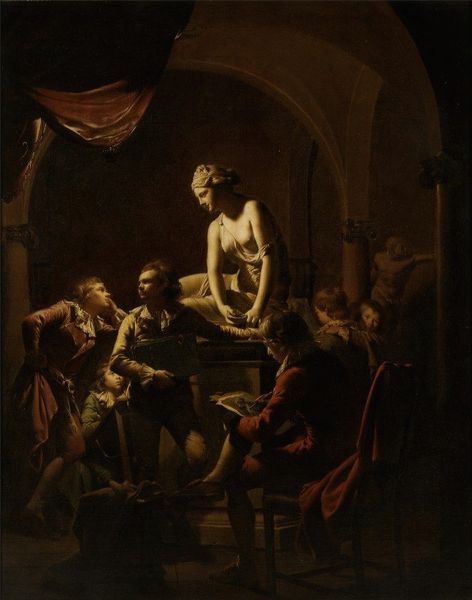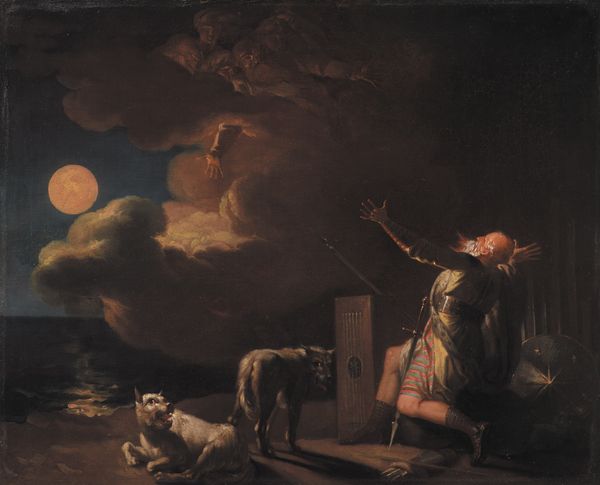
Tibullus Lamenting outside the Door of his Beloved 1808
0:00
0:00
painting, oil-paint, canvas
#
painting
#
silhouette
#
oil-paint
#
deep shadow
#
landscape
#
figuration
#
canvas
#
dark silhouette
#
romanticism
#
chiaroscuro
#
chiaroscuro
#
history-painting
Dimensions: 47.5 cm (height) x 37.5 cm (width) (Netto), 57 cm (height) x 47.7 cm (width) x 5 cm (depth) (Brutto)
Editor: This is Nicolai Abildgaard's "Tibullus Lamenting outside the Door of his Beloved," painted in 1808, using oil on canvas. The chiaroscuro is really striking. The deep shadows amplify the emotion of the scene, the sense of isolation. What's your take on this work? Curator: Considering the painting’s materiality, look at the rough canvas weave visible beneath the thin layers of oil paint. Abildgaard wasn't aiming for illusionistic polish here. Instead, he reveals the physical act of painting itself, almost as a commentary on the means of expressing such sorrow. Notice, also, how the architectural setting and figure seem almost swallowed by shadow. This isn’t just about the story of Tibullus; it's about exploring how societal structures—the imposing architecture, for example—can confine and isolate individuals, dictating their emotional landscape. Editor: That's interesting – I hadn’t thought of the architectural structure as a reflection of societal constraints, but now I see it. I was focused on the lone figure and the dramatic lighting, classic Romantic themes, but thinking about the making of the art itself changes how I see it. Curator: The artist's labour, then, becomes part of the narrative. It asks us to consider not just *what* is depicted, but *how* the artist's choices in materials and process shape our understanding of Tibullus’s lament. Is this theatrical emotion meant to critique the society from whence it sprang, and that provides both artist and subject matter? Editor: I’m now seeing how looking at the materials and how it was painted can reveal a lot about the broader cultural and social context. Thanks! Curator: Indeed, the artwork's surface reveals as much as its subject, reflecting both personal and societal realities.
Comments
No comments
Be the first to comment and join the conversation on the ultimate creative platform.
